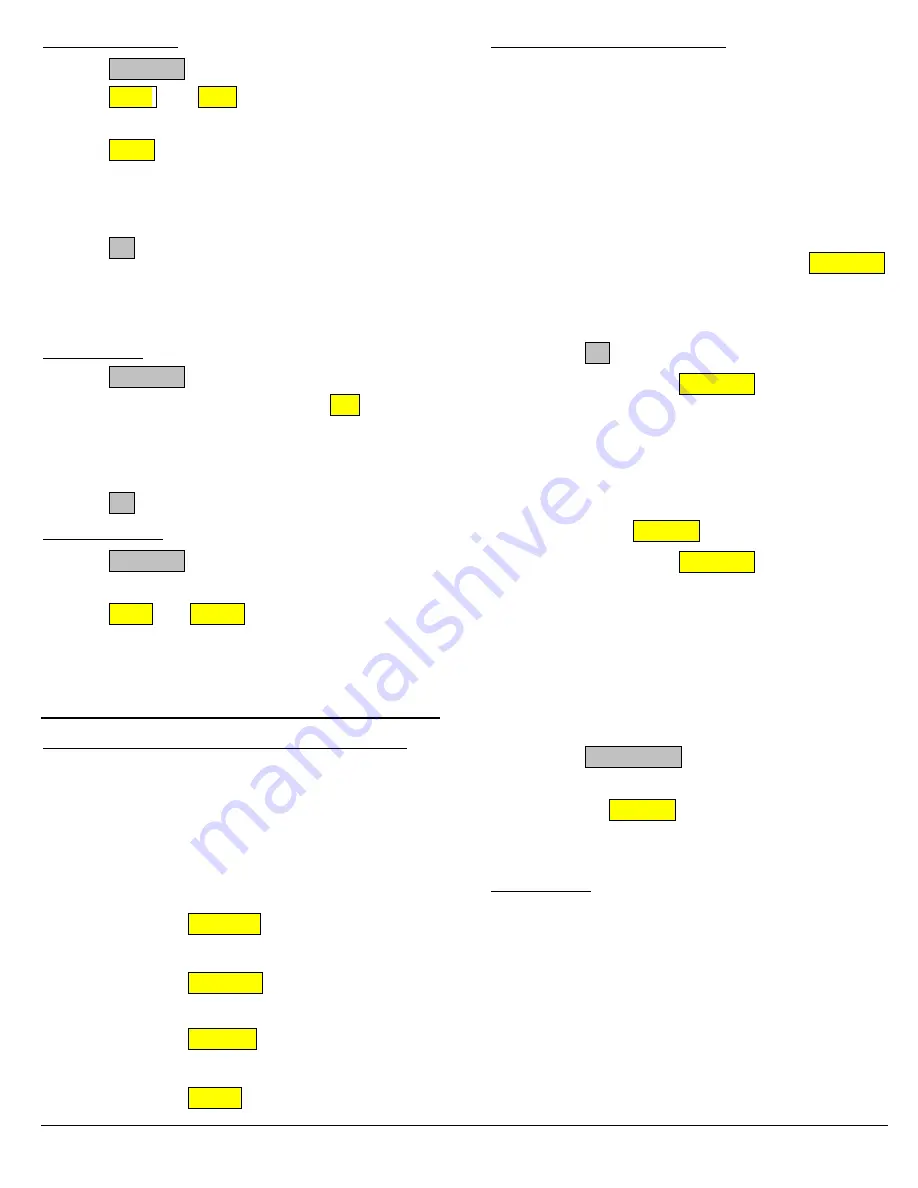
Issued October 21, 2014 – JT Massey
9608-9611G IP-Telephone
Page 3 of 4
Add a New Contact
1.
Press
Contacts
2.
Press
More
then
New
3.
Enter the name using the dial pad
4.
Press
Clear
to delete all text
5.
Use the navigation arrows to scroll to the next field
6.
Enter the telephone number
(reminder: dial 9 to get
an outside line)
7.
Press
OK
1.
If you receive the prompt “To access your
mailbox, enter your extension…” and Press the (#) key
twice, enter the extension number of the party.
Edit a Contact
8.
Press
Contacts
9.
Select the contact to be edited & Press
Edit
10.
Select the field to be edited
11.
Use the dial pad and soft keys to make changes to the
contact information
12.
Press
OK
Delete a Contact
1.
Press
Contacts
2.
Select the contact to be deleted
3.
Press
More
then
Delete
twice
Miscellaneous Telephone Operations,
Options, and Information
Placing a Call on Hold and Answering Another Call
1.
When a call is received, the cursor/highlight on the
display moves to the line/button appearance of the
incoming call. This allows you to be automatically
connected to the call when you lift the receiver or
press the Speaker button
2.
If you are already on a call, your choices are:
1.
Hold the existing call and answer the new call
•
Press the
Ans-Hold
button
2.
End/Drop the existing call and answer the new call
•
Press the
Ans-Drop
button
3.
Send the new call to Coverage
•
Press the
To VMail
button
4.
Ignore the new call and silence the ring tone
•
Press the
Ignore
button
Abbreviated/Speed Dial Buttons
1.
Abbreviated/Speed Dial (AD/SD) buttons are those
which you can program to dial numbers. This provides
additional automatic calling capability to the native
Contacts feature of the phone.
2.
Only one telephone number per button can be
configured. A maximum of 16-digits (AD) and 24-
digits (SD) may be entered per button
3.
Programming Summary:
•
Either get a Dial Tone and dial
(#80)
– the # sign
must be dialed or navigate to and Press
Abr Progr
•
Use the Up/Down arrow keys to navigate to the
AD/SD button to be programmed if the button is
not displayed on the screen and either select it or
Press
OK
o
If using the
Abr Progr
, a prompt will
appear on the Prompt/top line
“Change
numbers? Yes=1 No=2”
o
Press (1)
•
Press (9 for calls outside the system) and the
number to be called as you would normally dial it
•
Re-Press the
AD/SD
button being programmed
o
If using the
Abr Progr
, a prompt will
appear on the Prompt/top line
“Change
label? Yes=1 No=2”
o
Press (1) to label the button – this does not
provide a robust labeling function as that
found in
Labeling AD/SD & Busy Buttons
Press (#) when finished
•
Hang up/turn-off the speaker
•
Press
Phone (exit)
4.
To Place a call:
•
Press the
AD/SD
button desired
5.
Abbreviated/Speed Dial buttons may be labeled with a
name using the
Labeling
feature detailed below
Busy Buttons
1.
Busy buttons are those which have been configured at
the request of your Telephone Administrator to
illuminate when the associate phone is in use. This
allows you to see when someone in your office is on
the phone
2.
When pressed, the button calls the associated station
3.
Busy buttons may be labeled with a name using the
Labeling
feature detailed below
4.
A busy button’s lamp blinks at 60 Interruptions per
Minute when the associated station calls you






















